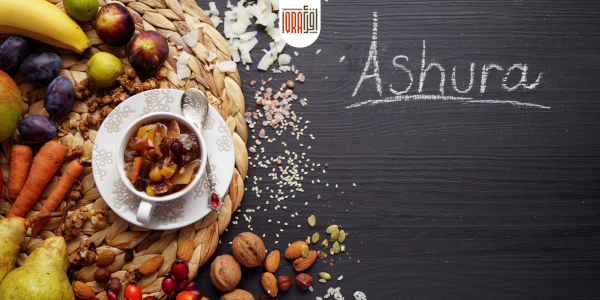Rulings on the Noon Sakinah andTanween :
Allah The Almighty said: “And recite the Qur’an with a chant”, i.e., do not rush to read the Qur’an, but rather read it slowly and clearly while reflecting on the meanings
Allah Almighty revealed the Noble Qur’an to Our Prophet Muhammad, ﷺ, and commanded him to recite its verses, reflect on and understand their meanings, while beautifying (chanting) its recitation to be different and distinguished from other textual readings.
The science of Tajweed appeared to explain the rules of reciting and reading the Noble Qur’an in the correct manner that was revealed to Our Holy Prophet,ﷺ, so the scholars were interested in the science of Tajweed; the science of tajweed was defined as: the science that is concerned with the manner in which the letters are pronounced with the aim of accurate recitation and reading of the Qur’an, with regard to the letters exits, their characteristics, and their rulings. Among the most important rules of Tajweed are the rulings on the Noon Sakinah and Tanween.
Rulingson the Noon Sakinah and Tanween :
Noon Sakinah: It means a Noon with a Jazm/Sukoon on it( stabilizes the lips when pronouncing it), such as )من،(عن(from, about), and comes in nouns, verbs, and letters, in the middle, and at the end, its sukoon is fixed in line, pronunciation, connection and according.
Tanween: It means a stunted Noon that joins the end of the noun as a vowel, and separates from it by a line and a waqf.
The difference between the Noon Sakinah and the Tanween :
| The Tanween | The Noon Sakinah |
| Is a (short vowel) stunted letter | Is an original letter |
| Fixed in pronunciation only | Fixed in pronunciation and line |
| Comes in nouns only | Comes in nouns, verbs, and letters |
| Located at the end | Located in the middle and at the end |
There are 4 rules related to the Noon Sakinah and Tanween:
(Izhar , Idghaam, Iqlab, Ikhfaa)
1-Izhar( to make something clear)
Izhar means” Clear”, we pronounce the “n” sound of the noon Sakinah or Tanween without pulling and Ghunnah. When there is any of the below letters of the throat after Noon Sakinah or Tanween. Izhaar will take place.
-Izhaar is in one word, such as : أَنعَمْتَ
– In two words, such as : مَنْهَاجر
– Tanween is such as : عليمٌحكيم
N.B. The first letter of each word in the following saying, these are the Izhaar letters :
2-Idghaam (merging/combining). If any of the letters of يرملون(yarmalun)appears after Noon Sakinah or Tanween, Idghaam will be done. Idghaam means to merge the “ن” sound of the Noon Sakinah or Tanween with the following letter(must be one of يرملون letters “ی ر م ل و ن” ( Y- R -Meem – Laam -Waw – Nun).
Idghaam has two types:
- A-Idghaam with Ghunnah: If any of these four letters of a group in the word: “يَنْمُو” (yanmou), comes, Idghaam will be done with Ghunnah (the “ن” sound of Noon Sakinah or Tanween will be merged with one of the four letters “يَنْمُو” and also Ghunnah will be done with it).
The Examples of the Nun Sakinah withGhunnah: مِنْمَاءٍ، وَمَنيَعْمَل
The Examples of Tanween with Ghunnah: :
- Idigham without Ghunnah: if any of the two letters “ل ر ” (Laam ” Raa) comes, Idghaam will be done but without Ghunnah.
The Examples without Ghunnah:
3-Iqlaab( Overturning):
Iqlaab If “ب” (Baa) appears after the Noon Saakin or Tanween whether, in one word or two words, Iqlaab will take place. Iqlaab means to change the sound of “ن” of Noon Saakin or tanween into a hidden meem. The sound of noon “ن” of noon Sakinah “نْ” or Tanween changes into meem “م” sound and Ghunnah (Nasal Sound) will be done on the meem ” م ” in some scripts a small meen ” نۢ ” is written to denote that noon “ن ” changes into meem ” م ”.
The Examples :
4-IKhfaa(Concealment)( to hide)
Ikhfaa is going to hide “n” sound: if any of following fifteen ( ت ث ج د ذ ز س ش ص ض ط ظ ف ق ك) letters appears after Noon Sakinah or Tanween, Ikhfa will be done. Ikhfa means to slightly “ hide”; a characteristic between Izhar and Idghaam, devoid of stress while remaining Ghunnah, when you see any of these letters, make a light Ghunnah and lengthen for 1 second, remember to hide the “n” sound from the Noon Sakinah and Tanween and to do so, the tongue must be moved away from a little from the upper folds.
The Examples :
The IKhfaa letters groups in the first words of this verse:
Increase in the piety Describe the two how
of good blood, put much a person has
down an unjust exalted himself
To learn more on the rules of Tajweed:
IQRA Network offers you an integrated electronic program on the rules of Tajweed through a group of qualified Al-Azhar sheikhs and professors who have Ijazahs (“authorizations “, “licenses “, “permissions ” )to teach the rules of Tajweed in several readings, the most important of which is the reading of Hafs from Asim.
To master the following skills:
– Spelling and pronunciation correction.
– Rulingson the Meem and NoonMushadd.
– Rulings on the Noon Sakinah and Tanween (Izhaar, Idghaam, Iqlaab, IKhfaa).
-Rulings on the Meem Sakinah (Oral Izhar, Oral IKhfaa)
– Tafkheem (Amplification) (Fattening) andTareqeeq (thinning).
-The Qalalah
-Rulings on the Madd.
And lots of other rulings that will help you, they are as follows:
-Keeping your tongue from error and pronouncing the Arabic letters from their correct exits.
-Beautifying and improving your reading of the Qur’an by following fixed rules for reading.
-Distinguishing between reading the Noble Qur’an and other textual readings.
Increasing reverence and reflecting on the verses of the Noble Qur’an and demonstrating the Qur’anic miracles.





0 Comments
Oops comments are disabled